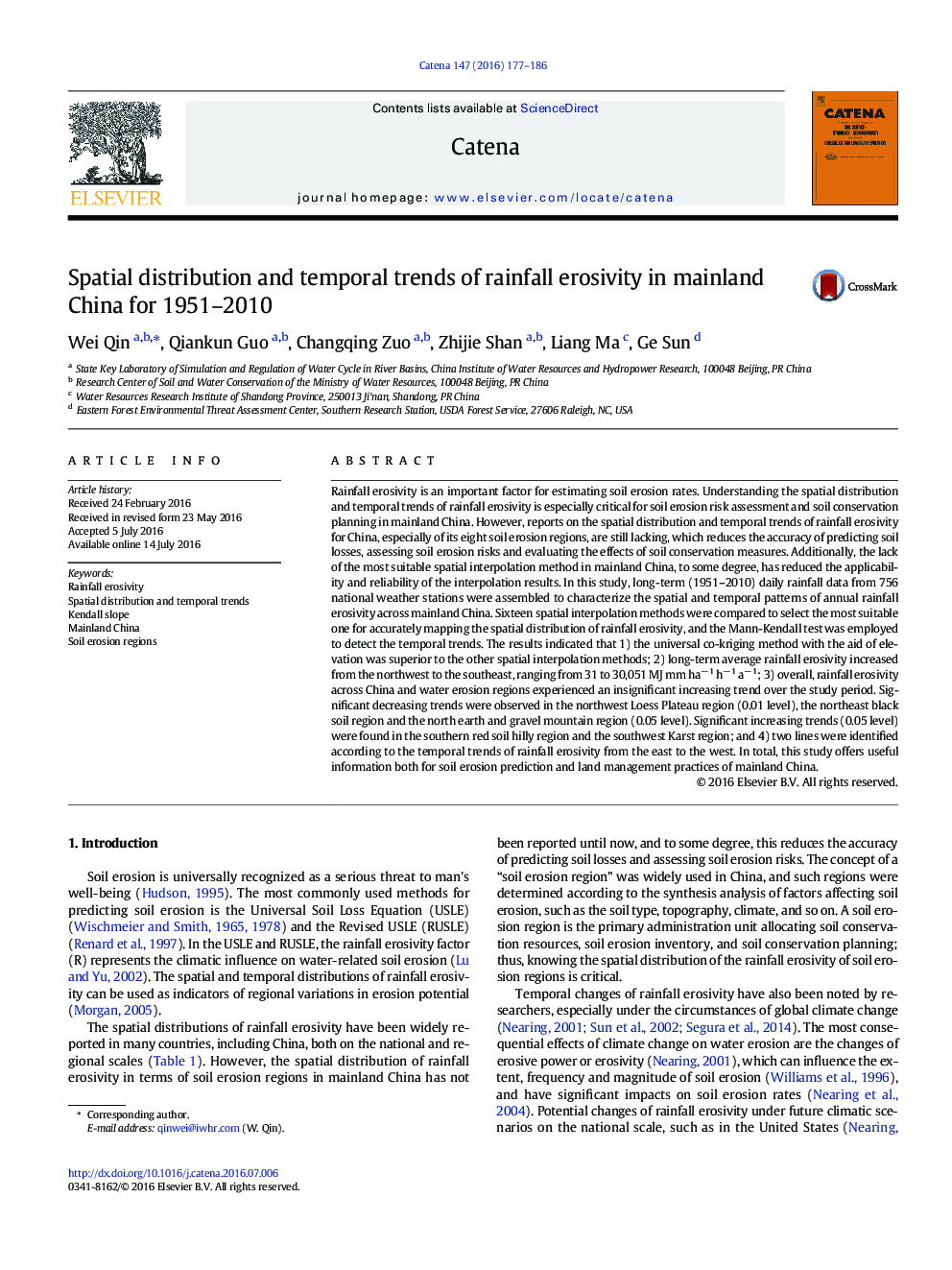| Article ID | Journal | Published Year | Pages | File Type |
|---|---|---|---|---|
| 6407703 | CATENA | 2016 | 10 Pages |
â¢Spatial interpolation methods for mapping rainfall erosivity were contrasted.â¢Spatial distribution of long-term annual rainfall erosivity was presented.â¢Temporal trends of China and soil erosion regions were quantified.â¢Spatial difference of changing trends were detected for China and erosion regions.â¢Areas with increasing, decreasing trend and no changes were identified.
Rainfall erosivity is an important factor for estimating soil erosion rates. Understanding the spatial distribution and temporal trends of rainfall erosivity is especially critical for soil erosion risk assessment and soil conservation planning in mainland China. However, reports on the spatial distribution and temporal trends of rainfall erosivity for China, especially of its eight soil erosion regions, are still lacking, which reduces the accuracy of predicting soil losses, assessing soil erosion risks and evaluating the effects of soil conservation measures. Additionally, the lack of the most suitable spatial interpolation method in mainland China, to some degree, has reduced the applicability and reliability of the interpolation results. In this study, long-term (1951-2010) daily rainfall data from 756 national weather stations were assembled to characterize the spatial and temporal patterns of annual rainfall erosivity across mainland China. Sixteen spatial interpolation methods were compared to select the most suitable one for accurately mapping the spatial distribution of rainfall erosivity, and the Mann-Kendall test was employed to detect the temporal trends. The results indicated that 1) the universal co-kriging method with the aid of elevation was superior to the other spatial interpolation methods; 2) long-term average rainfall erosivity increased from the northwest to the southeast, ranging from 31 to 30,051 MJ mm haâ 1 hâ 1 aâ 1; 3) overall, rainfall erosivity across China and water erosion regions experienced an insignificant increasing trend over the study period. Significant decreasing trends were observed in the northwest Loess Plateau region (0.01 level), the northeast black soil region and the north earth and gravel mountain region (0.05 level). Significant increasing trends (0.05 level) were found in the southern red soil hilly region and the southwest Karst region; and 4) two lines were identified according to the temporal trends of rainfall erosivity from the east to the west. In total, this study offers useful information both for soil erosion prediction and land management practices of mainland China.
